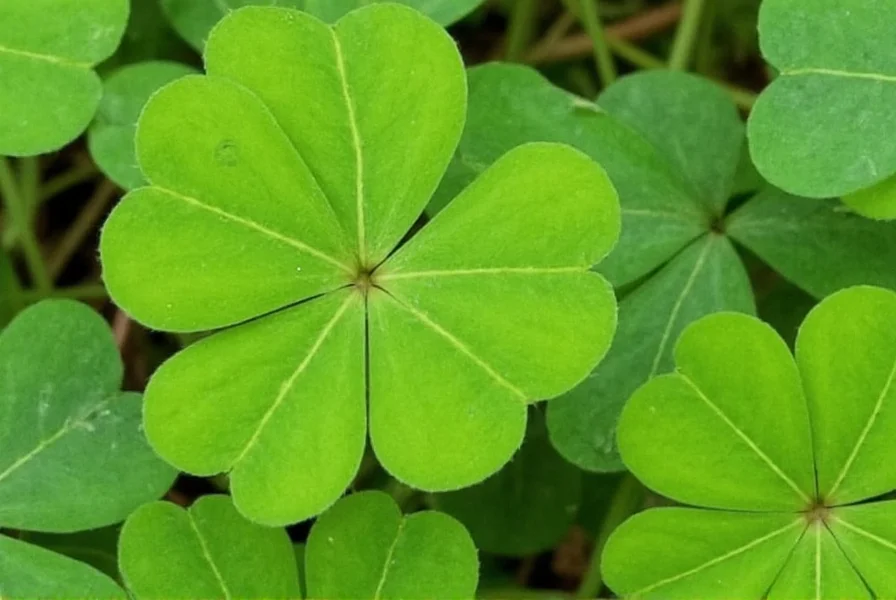Many gardeners and plant enthusiasts search for information about "felicia clover" only to discover they're actually looking for details about two separate plant categories. This confusion stems from the similar-sounding names and occasionally similar appearance of certain species.
Understanding Felicia Plants
Felicia, commonly known as blue daisies, comprises approximately 40 species native to southern Africa. These herbaceous plants feature daisy-like flowers typically in shades of blue, purple, or white. The most popular garden varieties include:
- Felicia amelloides (Blue Daisy) - A perennial with sky-blue flowers
- Felicia bergeriana - Known for its vibrant blue petals with yellow centers
- Felicia echinata - Features spiky blue flowers
Gardeners seeking information about felicia daisy vs clover identification should note that Felicia plants have characteristic daisy-shaped blooms with prominent yellow centers, unlike clover's rounded flower heads.
Clover Plant Fundamentals
Clover (Trifolium) includes over 300 species of plants in the legume family. Common varieties include:
| Clover Type | Characteristics | Common Uses |
|---|---|---|
| White Clover (Trifolium repens) | Low-growing, white flower heads | Lawn alternative, erosion control |
| Red Clover (Trifolium pratense) | Taller, pinkish-purple flower heads | Soil improvement, herbal remedies |
| Crimson Clover (Trifolium incarnatum) | Vibrant red flowers, fast-growing | Cover crop, pollinator attraction |
Unlike Felicia plants, clovers feature distinctive three-leaf patterns (though four-leaf variants occasionally occur) and rounded flower heads. When researching growing clover in home gardens, gardeners should understand these plants fix nitrogen in soil, making them valuable for soil health.

Common Confusion Points
The confusion between Felicia and clover often occurs for several reasons:
- Similar common names - Some Felicia species have "blue" in their names, while some clovers have "blue" in regional names
- Visual similarities - Both can have low-growing habits in certain varieties
- Mislabeling at nurseries - Occasionally, plants get incorrectly labeled
- Online misinformation - Some websites incorrectly combine these plant types
For those researching difference between felicia and clover plants, the most reliable identification method involves examining the flower structure. Felicia produces classic daisy formations with ray and disc florets, while clover creates spherical or oval flower heads composed of numerous small individual flowers.
Gardening Recommendations
Understanding whether you're working with Felicia or clover is crucial for proper plant care:
Felicia cultivation tips:
- Prefer well-draining soil and full sun
- Most varieties are drought-tolerant once established
- Thrives in USDA zones 9-11 as perennials, grown as annuals elsewhere
- Regular deadheading encourages continuous blooming
Clover cultivation considerations:
- Adaptable to various soil types, including poor soils
- White clover tolerates foot traffic, making it suitable for lawns
- Fixes nitrogen, reducing need for fertilizer
- Can become invasive in some garden settings
Practical Applications
Each plant serves different purposes in landscaping and gardening. Those exploring what is felicia plant used for will find these plants primarily valued for ornamental purposes, attracting pollinators with their vibrant blooms.
Conversely, gardeners interested in types of clover plants for lawns discover practical applications including:
- Natural lawn alternative requiring less mowing
- Soil improvement through nitrogen fixation
- Erosion control on slopes and banks
- Supporting beneficial insects and pollinators
Understanding these distinctions helps prevent common gardening mistakes, such as applying inappropriate care techniques based on misidentification. When researching common plant identification mistakes, recognizing the Felicia-clover confusion ranks among the most frequent errors made by novice gardeners.
Is Felicia the same as clover?
No, Felicia and clover are completely different plants. Felicia belongs to the daisy family (Asteraceae) with daisy-like flowers, while clover belongs to the bean family (Fabaceae) with characteristic three-leaf patterns and rounded flower heads. They have different growth habits, care requirements, and botanical classifications.
Why do people confuse Felicia with clover?
People often confuse Felicia with clover due to similar-sounding names, occasional visual similarities in growth habit, mislabeling at nurseries, and online misinformation. Some Felicia species have "blue" in their names, which can be confused with certain regional names for clover varieties.
How can I tell Felicia and clover apart?
Examine the flowers: Felicia has classic daisy formations with ray and disc florets and yellow centers, while clover has spherical or oval flower heads composed of many small individual flowers. Clover also typically displays the characteristic three-leaf pattern, though Felicia leaves are alternate and don't form this distinctive arrangement.
Can I grow Felicia and clover together in my garden?
Yes, you can grow Felicia and clover together, but consider their different needs. Felicia prefers well-draining soil and full sun with moderate watering, while clover tolerates various soil conditions and fixes nitrogen. Plant them in appropriate locations based on their growth habits—Felicia works well in borders while clover can serve as ground cover.
What are the main gardening uses for Felicia plants?
Felicia plants are primarily used as ornamental flowers in gardens, valued for their vibrant daisy-like blooms that attract pollinators. They work well in borders, containers, and cutting gardens. Unlike clover, Felicia doesn't fix nitrogen or serve as a lawn alternative, but it provides continuous color throughout the growing season with proper care.










 浙公网安备
33010002000092号
浙公网安备
33010002000092号 浙B2-20120091-4
浙B2-20120091-4